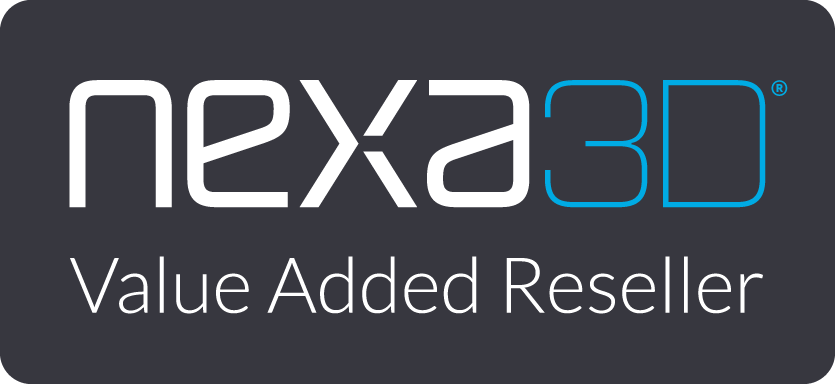Fraunhofer accelerates metal injection molding with 3D-printed tools
Research institute adopts Freeform Injection Molding to provide rapid prototyping of complex metal parts

Fraunhofer IFAM – an institute of the renowned Fraunhofer-Gesellschaft – is a recognized market leader in the field of metal injection moulding (MIM) and supplies companies in the aerospace, energy, marine and other demanding industries. To support the exploration of new applications while reducing lead times and costs, Fraunhofer recently decided to introduce the Freeform Injection Molding (FIM) process supported by Nexa3D’s XiP desktop 3D printer and LSPc® technology. This platform enables manufacturers to quickly and cost-effectively create prototypes of complex injection molded parts before investing in conventional metal tools.

The challenge
The production of tools for metal injection molding is costly and time-consuming
In metal injection molding (MIM), metal powder is mixed with a plastic binder to create a starting material that is then injected into a metal mold. The abrasive nature of the base material places high demands on the quality of the tool, and the complexity of the MIM process usually requires several iterations. Fraunhofer wanted to offer companies a way to test new concepts quickly and cost-effectively and turned to Nexa3D and Freeform Injection Molding to find a solution.
“Freeform Injection Molding offers us the perfect tools to support innovative companies in testing new concepts and materials.”
Sebastian Hein, Fraunhofer IFAM

Customer
Fraunhofer IFAM
Industry
Contract research and innovation
Products
- XiP desktop 3D printer
- xMOLD 3D-printed resin for tools
- Demolding Station
Application
3D-printed injection molds
Advantages
- Ability to offer metal prototype parts in 10 days or less
- Significantly reduced costs for the production of prototype tools
- Increased design freedom
- Less risk in development and innovation


Solution
3D-printed injection molds with xMOLD resin and freeform injection molding
Fraunhofer took inspiration from other companies using freeform injection molding and decided to introduce the XiP desktop 3D printer and xMOLD resin. This compact platform is the ideal solution for printing molds in the product size range typical of MIM, and the xMOLD tooling resin has a proven track record in molding high-performance materials.
Benefit
2-week design cycle possible for complex metal parts
By introducing the FIM process with the XiP 3D printer and Nexa3D’s xMOLD material, the Fraunhofer IFAM team offers its customers a wide range of benefits.
Rapid prototyping: With FIM, Fraunhofer can quickly produce prototypes of MIM components for customer demonstrations and validation tests. The material properties of FIM components have been proven to be the same as those produced using conventional steel tools, enabling accurate performance evaluation.
Time and cost savings: FIM enables Fraunhofer IFAM to drastically reduce the time and costs involved in the production of pilot tools. The exceptional speed of the XiP printer makes it possible to print and inject on the same day, while at the same time achieving cost and time savings of more than 75% compared to conventional pilot tools.
Less risk for development and innovation: Fraunhofer IFAM has already proven that FIM is compatible with BASF’s gold standard Catamold, so that customers can use well-characterized materials for their development and innovation.


Impact on customers
MIM prototype for complex designs demonstrated
Metal injection molding suffers from a lack of prototyping options. Conventional AM approaches, whether powder or binder based, cannot be used to evaluate flow paths, stress patterns in the mold or distortion of molded parts during debinding and sintering. As a result, injection molders had to invest in expensive pilot tools if they wanted to validate part designs and process parameters. With the first project – the GE Jet Engine Bracket – Fraunhofer IFAM already demonstrated the simplicity, speed and design freedom that free-form injection molding offers.
The Fraunhofer team opted for a bracket design suitable for injection molding and for the use of the well-known standard material Catamold 17-4PH from BASF as the material. The soluble injection mold was printed with an XiP printer cell and finished with an Arburg 320 injection molding machine.
The project confirmed several important aspects of freeform injection molding:
The construction time for the molds is reduced from days to hours, as the molds do not have to contain split lines, ejector pins or sliding elements.
Test molds can be produced in days instead of weeks.
Injection molding can be carried out with standard injection molding machines and materials and delivers a material quality that is in no way inferior to that of conventional metal injection molding.


